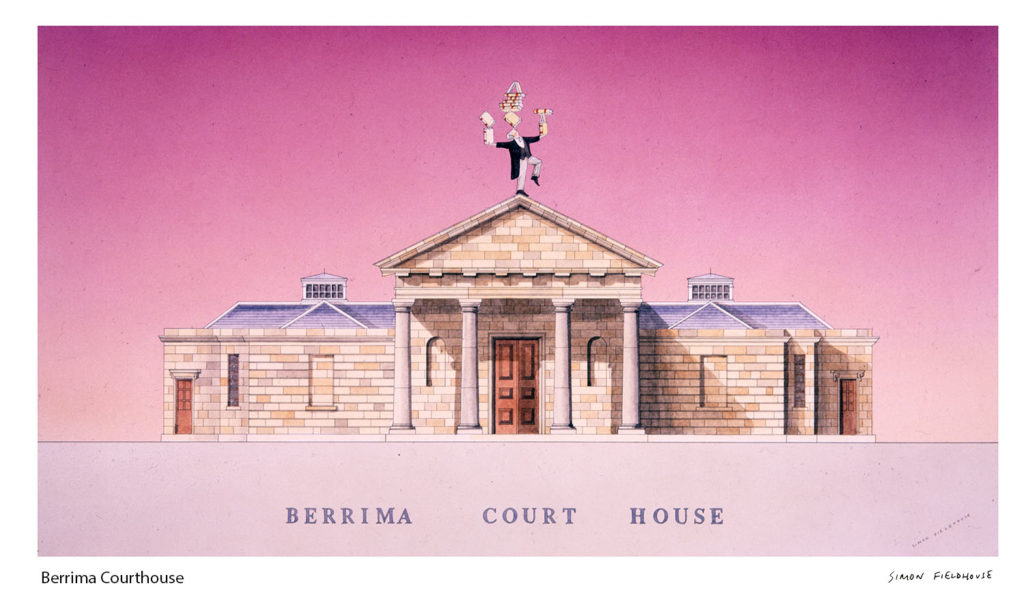
Berrima Courthouse
Berrima Court House was built between 1836 and 1838. It was designed by the colonial architect Mortimer Lewis in a Roman style. Four Doric columns support a classicalpediment. The building is now stylistically classified as Georgian. It is built of sandstone. A number of problems arose during construction, the first architect having resigned and a succession of three builders being contracted.
The first quarter-sessions were held at the court house in 1841, and the first trial by jury in the colony of New South Wales was held here.[9] The assize courts were continued for only seven years. In 1850 the district court moved to Goulburn, south of Berrima. Minor courts continued at Berrima until 1873. Notable trials were of John Lynch, who was hanged for the murder of at least nine people, and of Lucretia Dunkley and her lover Martin Beech who were both hanged in 1843 for the murder of Dunkley’s husband. Their trial is simulated in the present-day museum courtroom with realistic manikins and an audio commentary. Dunkley was the only woman to be hanged at Berrima gaol.
As the colony began to emerge from its convict origins, proper court houses were needed as places where the administration of justice could be put into effect. They were the symbols, even in the Australian bush, of the central place that law and justice has in our social system.
Australia's second Colonial Architect, Mortimer Lewis, designed Berrima Courthouse in the Greek Revival style giving the building its formal and imposing presence. Although the foundation stone was laid in 1835, problems with a succession of builders delayed completion until 1839. Ultimately the courthouse was only a Court of Assizes presided over by a Supreme Court judge from 1839 to 1846 although it was used intermittently for court sittings until 1884.
An important part of the town, the courthouse was also the centre of public administration where licenses were issued to publicans and hawkers and where convicts were assigned as farm workers. It was a venue for meetings, dances, concerts and church services.